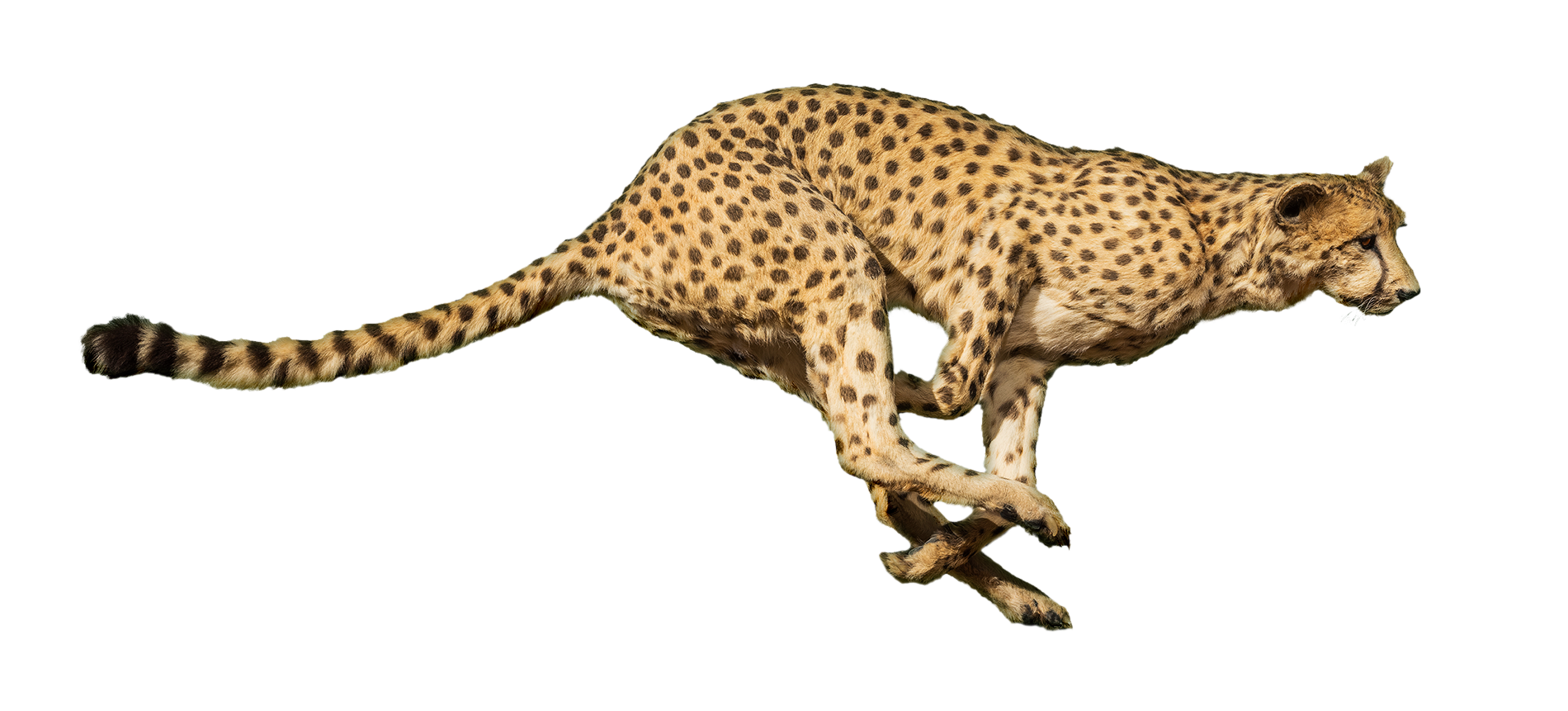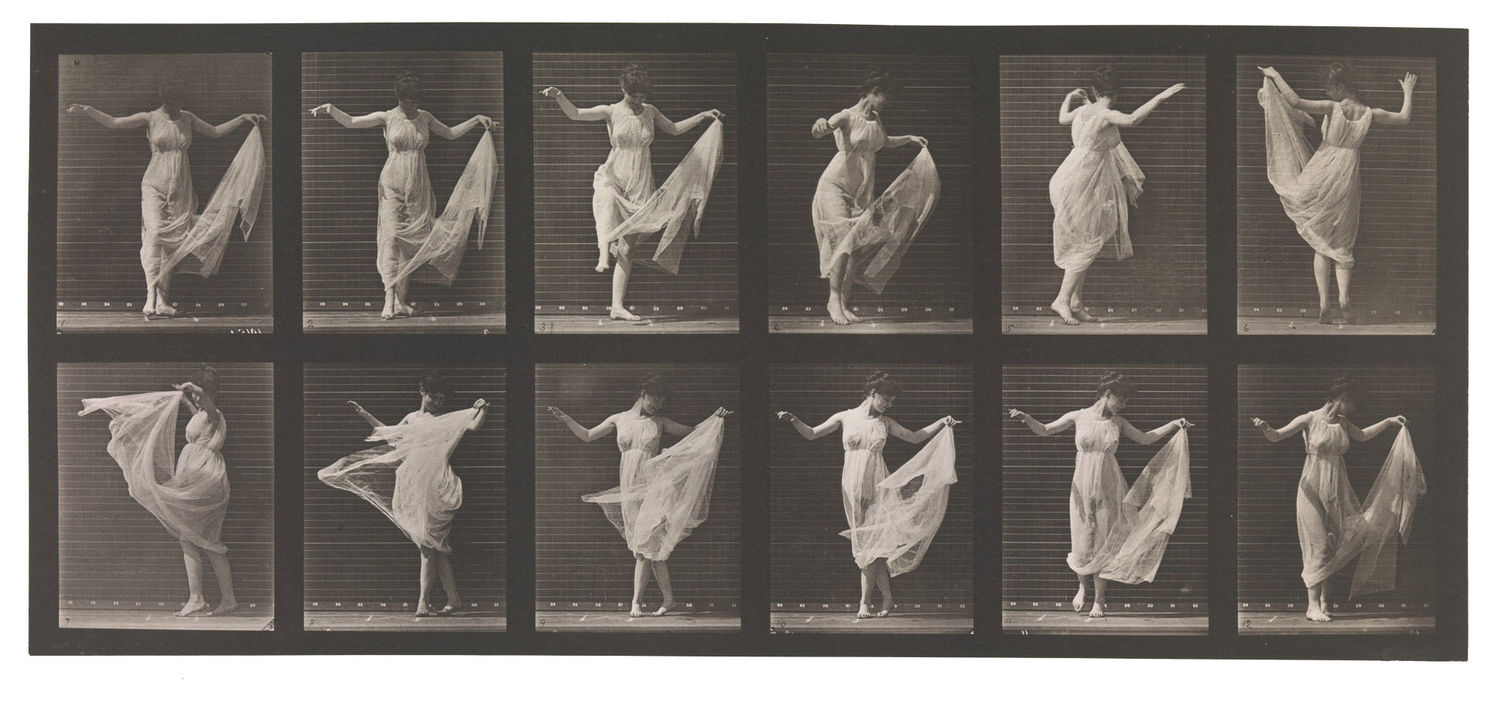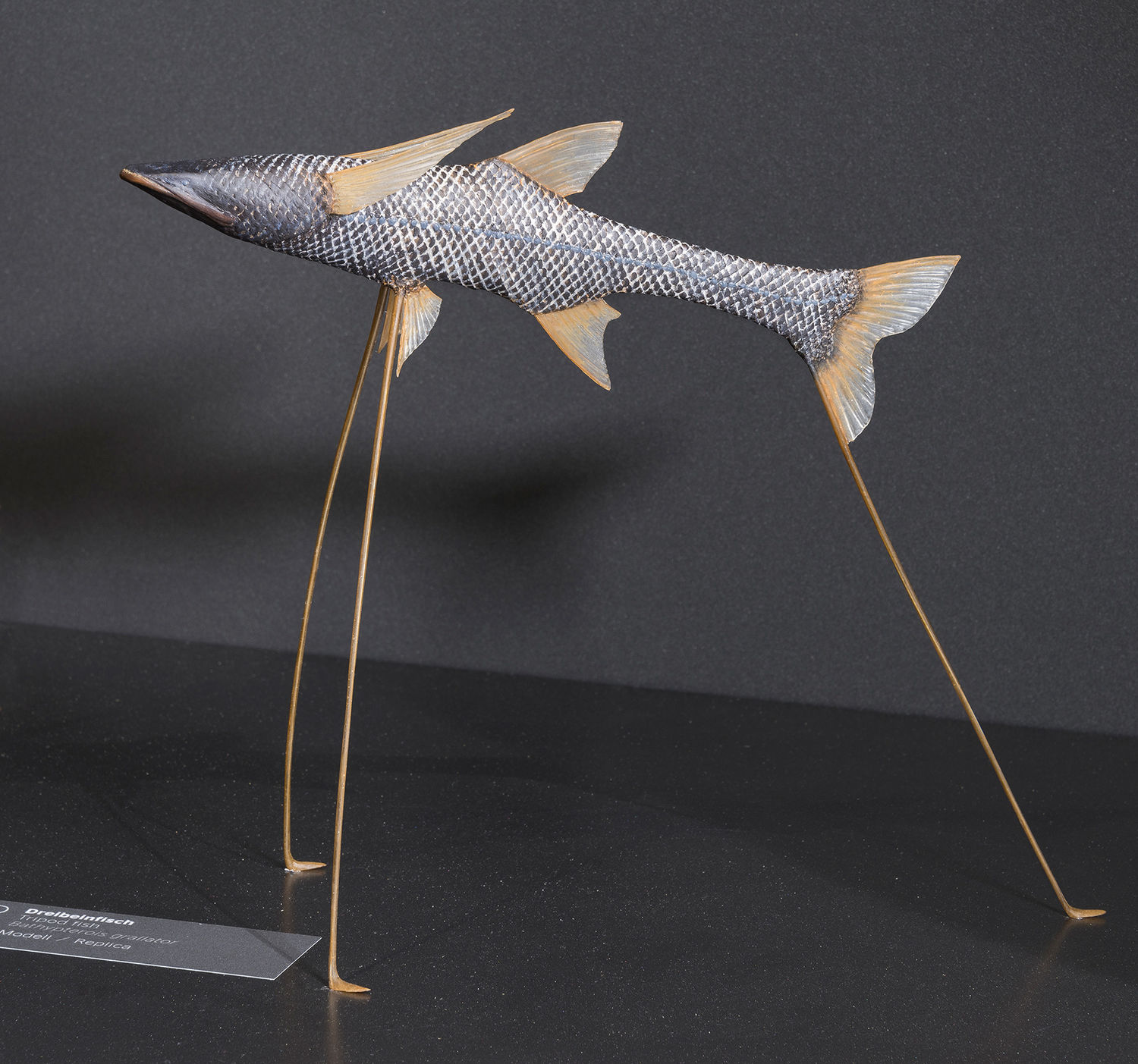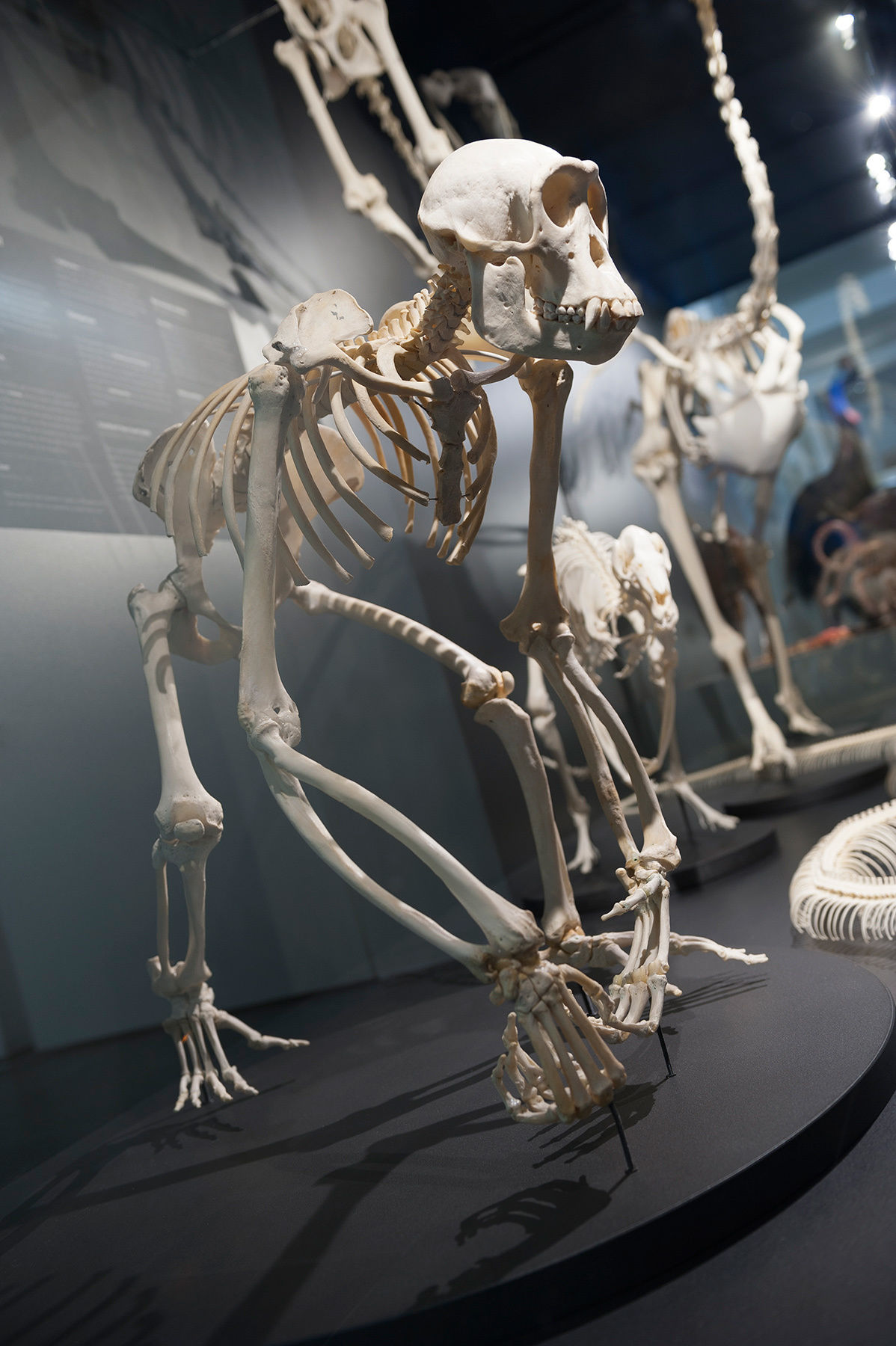
Everything that lives, moves — be it in water, on land, or in the air. Whether swans in flight, swiftly running antelopes or elegantly swimming hammerhead sharks – animals in motion evoke great fascination. Yet, rapid motion sequences remain hidden from the human eye. A variety of specimens demonstrates the biological requirements of motion and the many variations of swimming, running, and flying that have developed in the course of evolution.
They illustrate the evolution of vertebrates through their unique specializations for walking. For example, there is the very complex ankle joint of the chimpanzee, which gives it the necessary freedom of movement when shimmying in the trees, while the leg joints of the ostrich allow it to move in only one direction. When it comes to locomotion, nature is inventive. As flying fish, masterly swimming land animals or flightless birds all remind us, however, evolution never proceeds in a straight line. Even without legs, fins or wings, animals move within their habitats.
The “Movement” room offers visitors insight into the human appreciation for the aesthetics of motion and the use of film to document and artistically represent movement. Renowned landscape photographer Eadweard Muybridge was commissioned by a wealthy American racing stable owner to photograph his fastest horse in the stable while running. To do so, Muybridge developed a new recording and playback technique and ended up making photography and film history: First there were 12, then 24 and finally 36 cameras set up in a row, which were connected in series to record the animal as it moved passed the cameras. The result was movement broken down into distinct frames, which revealed that horses hover for a moment at the trot and that the gallop can be seen as a sequence of jumps. The photo sequence provided new scientific insights, prompting Muybridge to continue his motion studies. Bison, cat, elephant, a walking horse, and the racehorse with rider are all available for view in the permanent exhibition of Museum Wiesbaden. Muybridge saw himself as an artist and sought to educate his fellow artists about movement patterns in humans and animals. His photographs of a female nude climbing stairs are of particular art historical significance.














Museum Wiesbaden offers a variety of programs for all ages, from guided tours to workshops for preschools and schools, to teacher training and programs for students, private groups, or families with children.